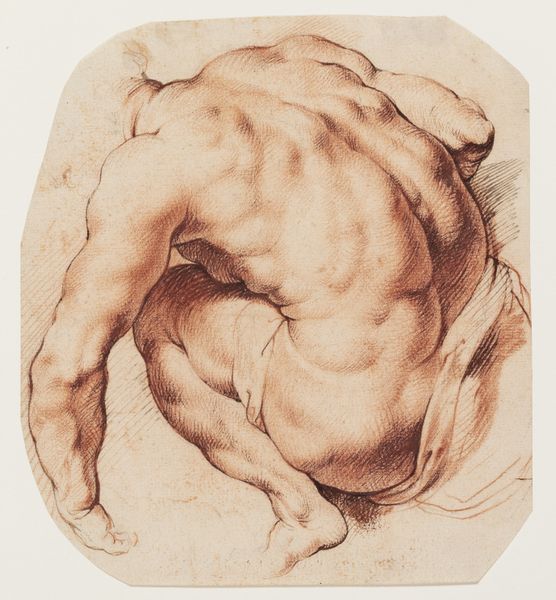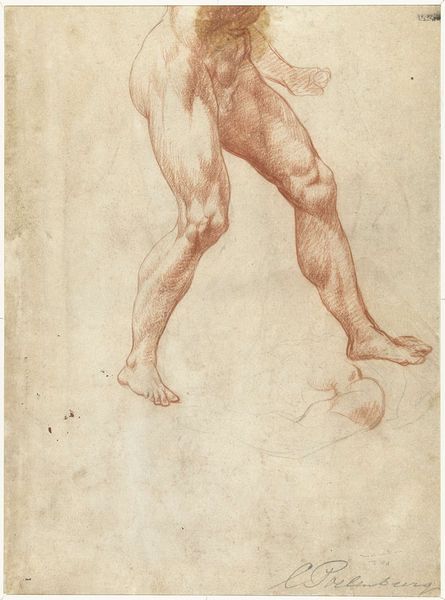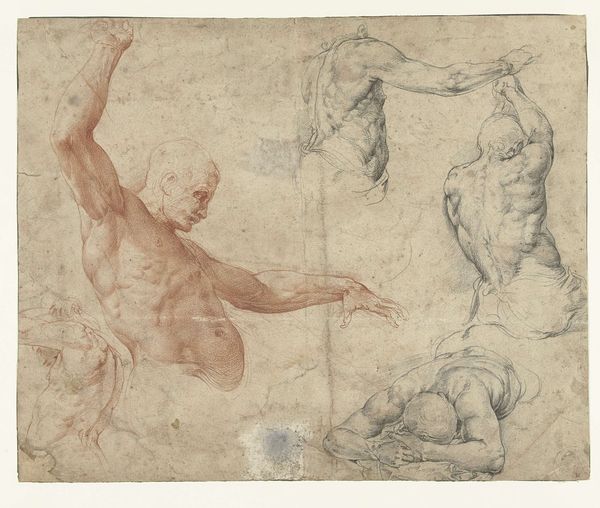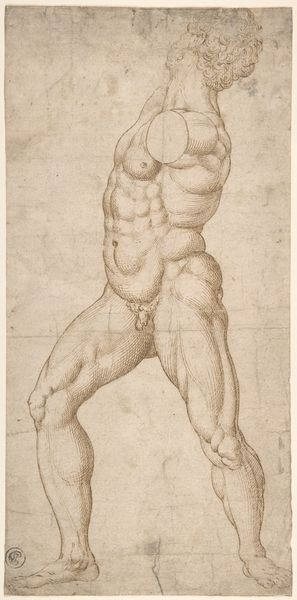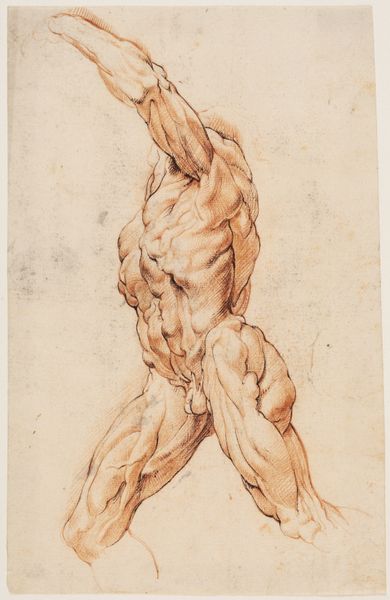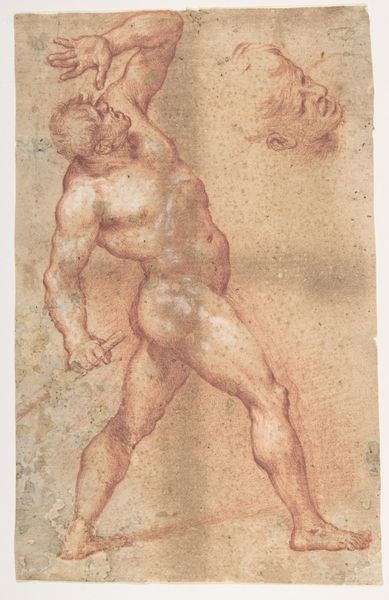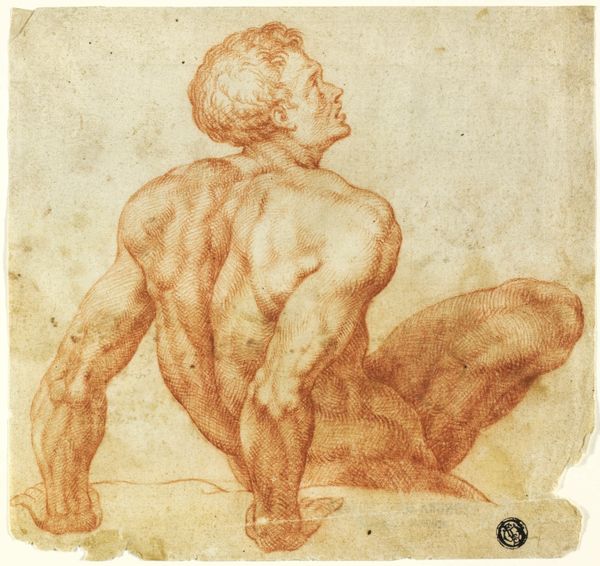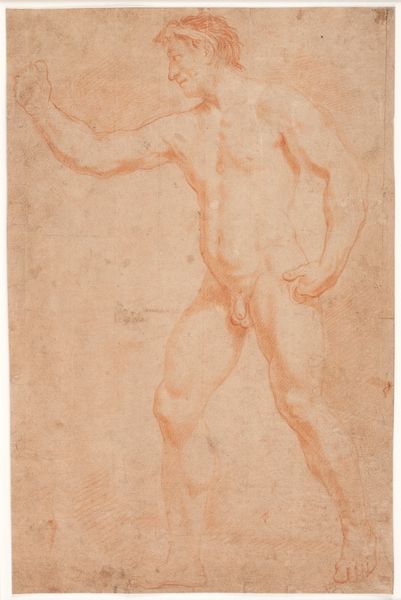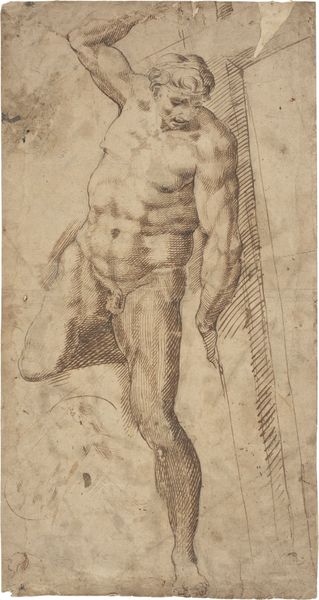
drawing, dry-media, charcoal
#
drawing
#
charcoal drawing
#
figuration
#
11_renaissance
#
dry-media
#
charcoal
#
history-painting
#
academic-art
Dimensions: 207 mm (height) x 226 mm (width) (bladmaal)
Willem Panneels created this red chalk drawing of the front view of Laocoon’s torso in the early 17th century. Panneels, who worked in Rubens's studio, likely encountered the famed sculpture during a trip to Rome. The Laocoon, unearthed in 1506, captivated artists and intellectuals alike. Its depiction of male agony and muscularity set a precedent that would influence the representation of the male form for centuries. But we must also acknowledge the problematic history of idealizing the white, male physique. In this drawing, Panneels focuses on Laocoon’s suffering and the physical embodiment of his struggle. Consider how the male body is presented: as a site of both power and vulnerability. Does it challenge or perpetuate the traditional narratives of masculinity and heroism? This drawing invites us to contemplate how classical ideals continue to shape our perceptions of the body, power, and pain.
Comments
No comments
Be the first to comment and join the conversation on the ultimate creative platform.
